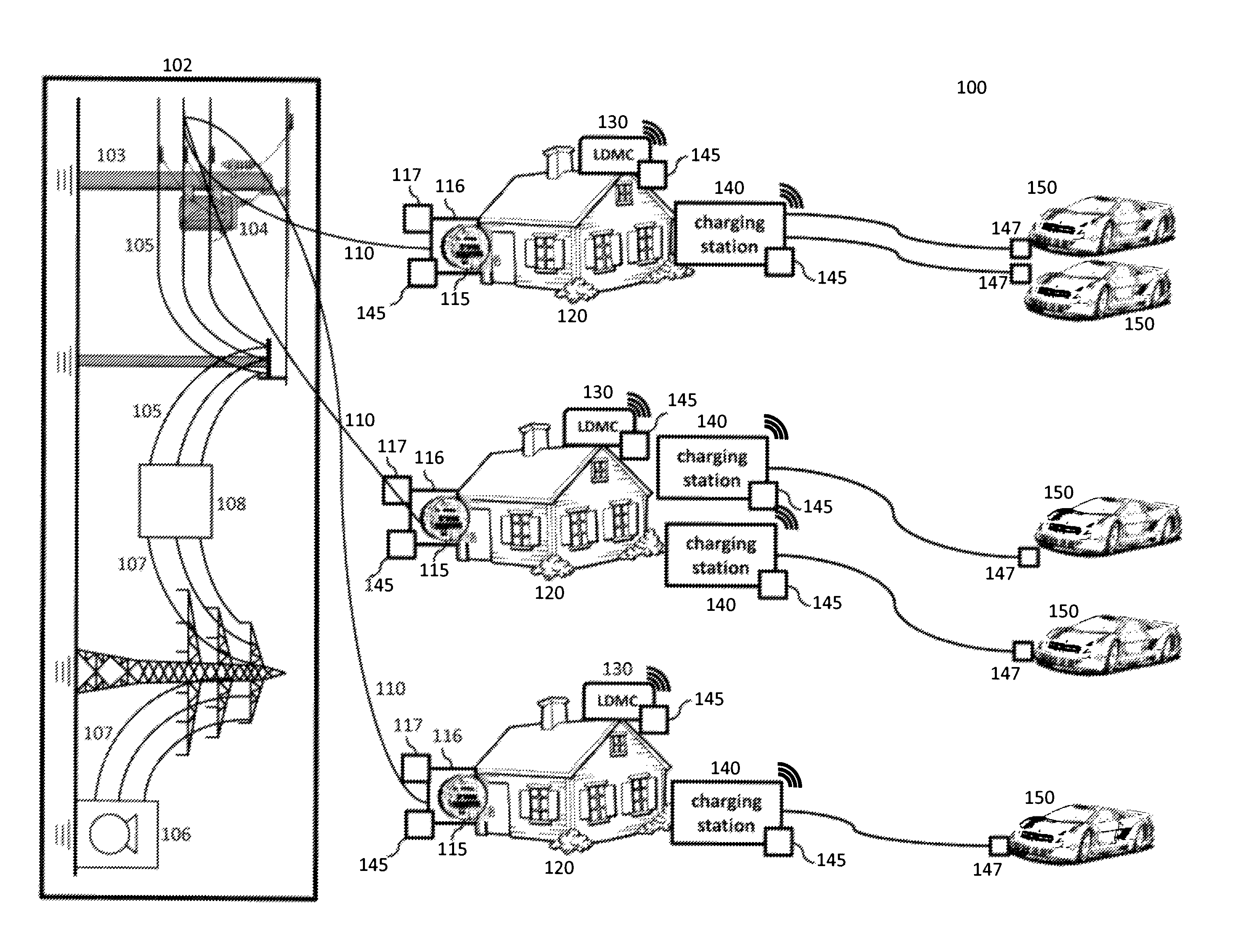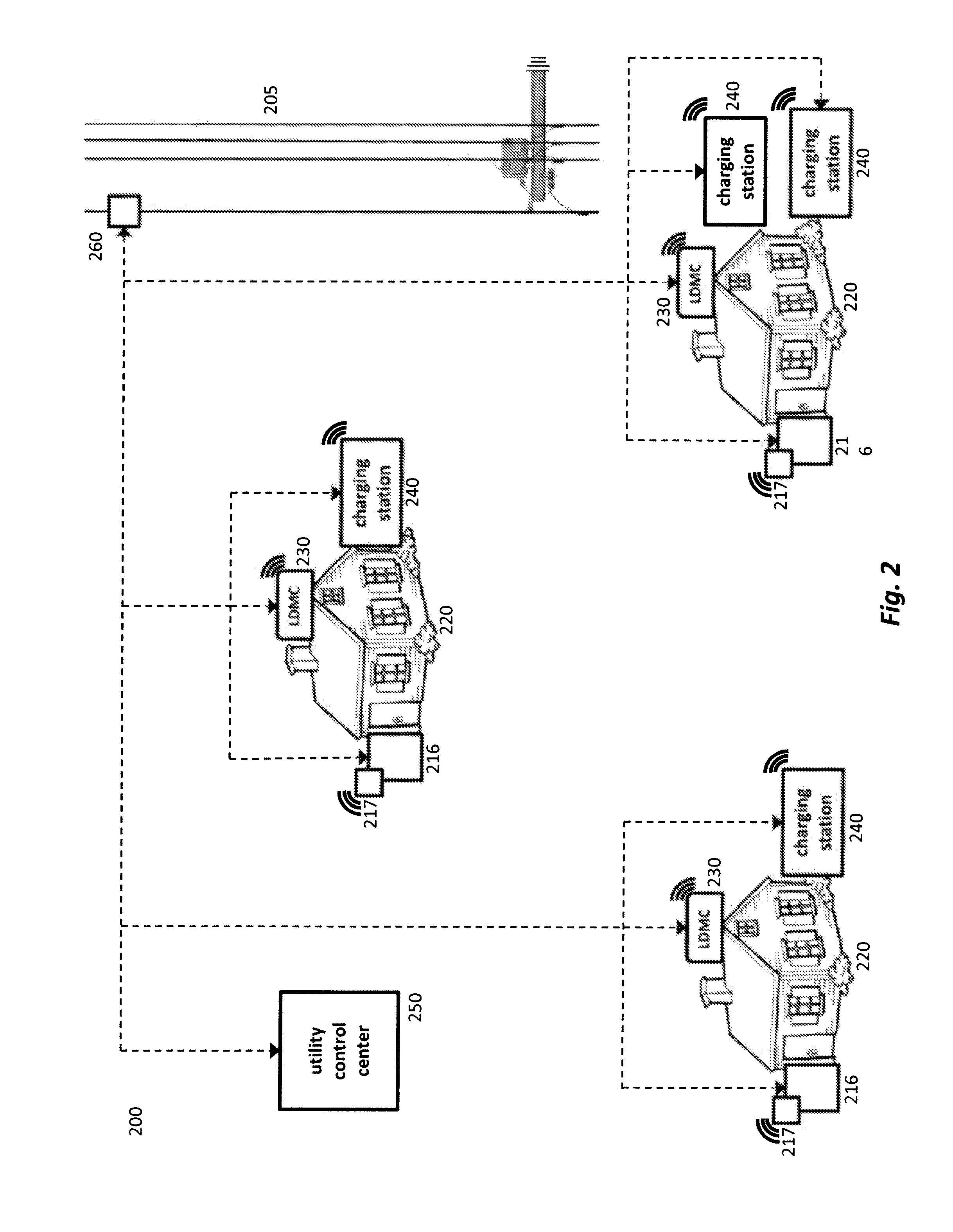Network as automation platform for collaborative E-car charging at the residential premises
a technology for e-car charging and network, applied in non-electric variable control, process and machine control, instruments, etc., can solve problems such as constraints on existing power distribution infrastructure, and achieve the effect of reducing amperage supply and lessening charging results
- Summary
- Abstract
- Description
- Claims
- Application Information
AI Technical Summary
Benefits of technology
Problems solved by technology
Method used
Image
Examples
Embodiment Construction
[0023]A system and method enable collaborative negotiation between residences in order to allocate power from the neighborhood step-down transformer so as to maximize vehicle charging efficiency and user comfort. By decentralizing the collaborative mechanism and bringing it to the residential level rather than centralizing control at the transformer or any other platform (e.g. utility-specific control center), alterations to the existing electrical infrastructure are minimized. Furthermore, decentralization enhances system scalability, performance, reliability, and local decision-making capability.
[0024]FIG. 1 illustrates a typical configuration of a collaborative charging system 100 according to an exemplary embodiment of the present invention. The system 100 is established such that minimal changes to the power grid 102 are required. The power grid 102 includes a power generation source 106 connected to a step-down transformer 104 via high voltage transmission 107 and distribution...
PUM
 Login to View More
Login to View More Abstract
Description
Claims
Application Information
 Login to View More
Login to View More - R&D
- Intellectual Property
- Life Sciences
- Materials
- Tech Scout
- Unparalleled Data Quality
- Higher Quality Content
- 60% Fewer Hallucinations
Browse by: Latest US Patents, China's latest patents, Technical Efficacy Thesaurus, Application Domain, Technology Topic, Popular Technical Reports.
© 2025 PatSnap. All rights reserved.Legal|Privacy policy|Modern Slavery Act Transparency Statement|Sitemap|About US| Contact US: help@patsnap.com



